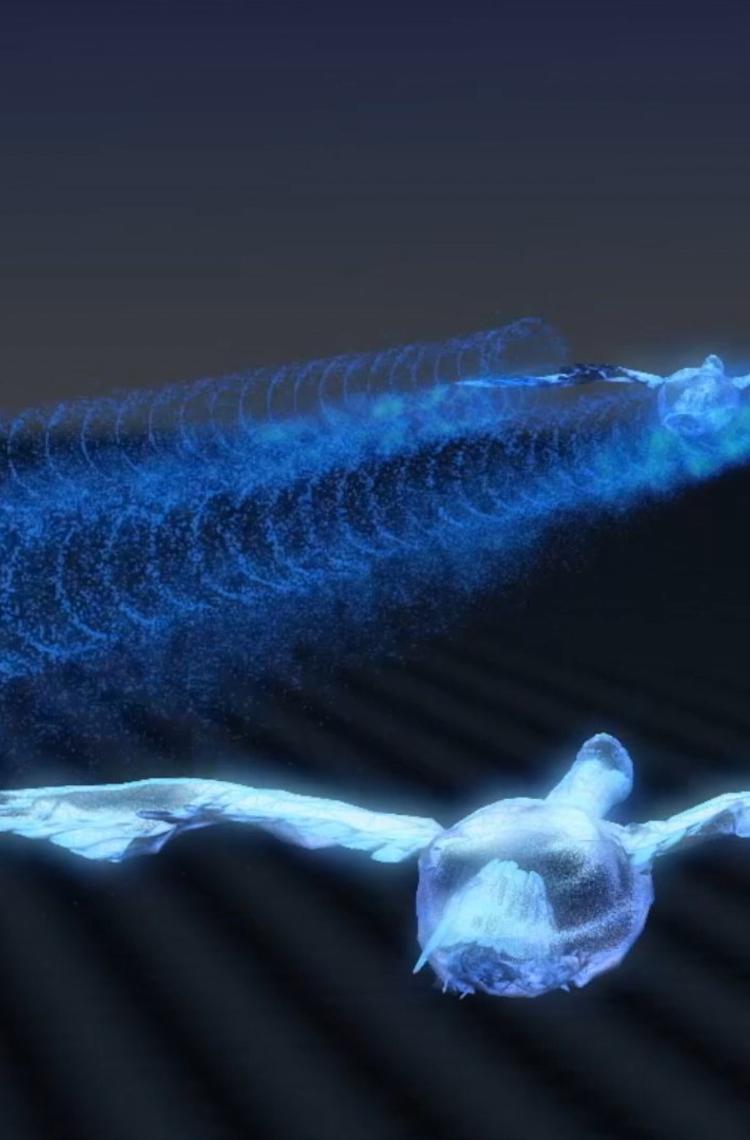The Airbus fello’fly demonstrator project is putting the principles of wake energy retrieval to the test as a way to reduce CO2 emissions—by between 3 and 4 million tons per year—on widebody operations. But flying two large passenger aircraft close together poses new operational challenges for the aviation ecosystem at large, requiring new procedures to be identified. Airbus has therefore signed agreements with two airline customers and three air navigation service providers (ANSPs) to tackle these challenges head on.
In the animal world, migrating geese have been benefiting from the flight technique of wake energy retrieval—or surfing the air upwash of a leader bird—since time immemorial. And the benefits are obvious: free lift means staying aloft for longer distances with a lot less energy expenditure—pragmatic reasons that persuaded Airbus engineers to take a closer look at applying the same technique to aircraft to help airlines reduce fuel consumption.
At Airbus, this demonstrator project is called fello’fly. But while initial flight tests have yielded the prospect of 5-10% fuel savings per trip, many have wondered: how can two aircraft fly sufficiently close together to safely carry out a fello’fly operation?
The answer to that question is multi-faceted. For airlines, the main concern is understanding which two aircraft are well-suited to this collaborative activity on any given day, as well as changes to the pilot’s role in executing a new kind of operation. For ANSPs, the key focus is helping controllers safely bring two aircraft together into a shared operation while managing new air traffic control (ATC) requirements. To demonstrate the operational feasibility of the project, and identify procedures for transatlantic operations, Airbus will collaborate with Frenchbee and SAS Scandinavian Airlines, as well as France’s DSNA (Direction des Services de la Navigation Aérienne), the UK’s NATS and EUROCONTROL.
How a fello'fly flight works?
Bringing two aircraft safely together
Aircraft fly along known routes within controlled airspace, based on flight plans approved in advance by ANSPs. This air traffic management system works effectively to prevent collisions and organise air traffic flow.
In oceanic airspace, two aircraft typically need to be 30 to 50 nautical miles (55 to 90 kilometres) apart, according to today’s regulations. However, during fello’fly operations, this separation will need to be reduced to 1.5 nautical miles (3 kilometres) to reap the full benefits of wake energy retrieval. While this sounds challenging, a pair of fello’fly aircraft will still remain ten times farther apart longitudinally than the 1,000-feet vertical separations that have been safely in practice for over two decades.
In the aviation industry, achieving our emission-reduction targets will require implementing innovative new ways to use aircraft in the skies. Our collaboration with our airline partners and ANSPs on fello’fly shows that we’re making good efforts towards these goals.
- Nick Macdonald, fello’fly Demonstrator Leader
In today’s operations, aircraft are directed by ATC to enter transatlantic routes at a specific time and altitude via a designated oceanic clearance point. Pilots then use a flight management function to direct the aircraft to arrive at the designated point at the specified time and altitude. In the case of two fello’fly aircraft, ATC will direct them to arrive at the same clearance point but on two different flight levels separated by 1,000 feet. Under the rules of today’s airspace and procedures, this is the closest aircraft can fly together.
Once both fello’fly aircraft have reached the clearance point, they will collaborate to manoeuvre into the rendez-vous position, which is when the follower aircraft is 1.5 nautical miles behind the leader aircraft and separated by 1,000 feet. From here, pilots will use flight assistance functions to move the aircraft safely to a position in the updraft where it is saving fuel through wake energy retrieval. When both aircraft need to separate to head to their destinations, one aircraft will reposition itself into the spare flight level and inform ATC, which will again start identifying them as individual aircraft within the ATC system.
An industry-wide collaboration to solve operational challenges
But before further fello’fly flight tests can be carried out in today’s airspace, this set of procedures and actions must be defined to allow airlines and ATC to plan and execute them. And the fello’fly team has been working closely with its partner ecosystem to make it happen.
According to Nick Macdonald, fello’fly Demonstrator Leader, the objective of the collaboration is to put in place safe and practical procedures that make it possible to share wakes generated by aircraft to reduce emissions.
“In the aviation industry, achieving our emission-reduction targets will require implementing innovative new ways to use aircraft in the skies,” Nick Macdonald, fello’fly Demonstrator Leader, explains. “Our collaboration with our airline partners and ANSPs on fello’fly shows that we’re making good progress towards these goals.”
Initial flight tests have already begun. The fello’fly team and their flight test colleagues are testing pilot assistance technology—designed to ensure safety standards are optimal when flying two aircraft close together—in a programme that will lead the way to flight demonstrations in an oceanic airspace in 2021, involving airlines and ANSPs and a controlled Entry-Into-Service by 2025.
